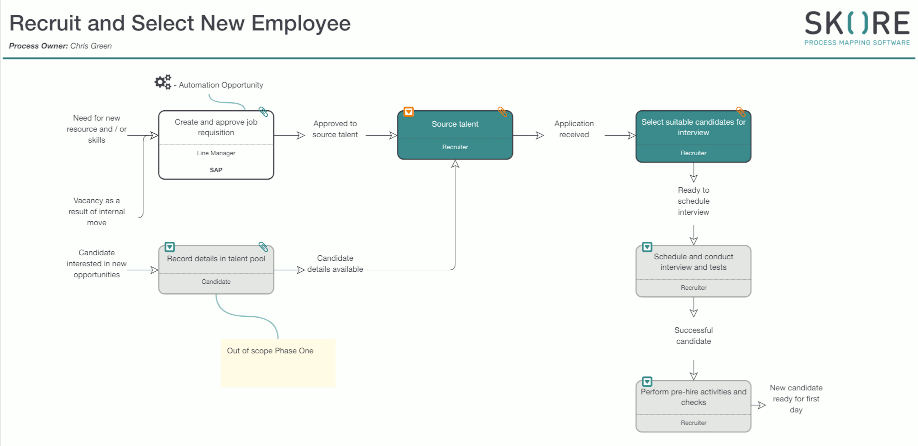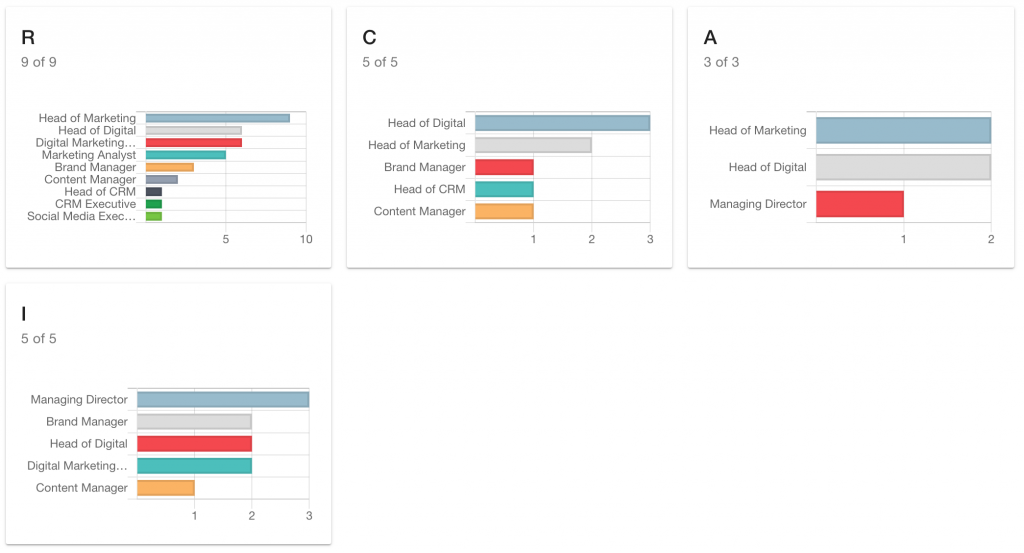How to map a To-Be Process
In this blog we’ll explore how to create your first to-be process. We’ll also make sure that you include all the information you need to ensure your process map is a success. To understand how to map a To-Be Process, we first need to make sure that we’re clear about what we mean by a to-be process.
In the world of process mapping, and process improvement, To-Be process mapping is all about designing new processes that the organisation isn’t doing today. Another common name for To-Be processes is ‘Future state’.
This is the opposite to an As-Is process, which is a process map of what’s happening right now or what we call the ‘Current state’.
Before we start looking at how to map a To-Be process you may want to check out some of our related guides:
- What’s the difference between To-Be and As-Is, and when to use one over the other.
- Our Complete Process Mapping Guide.
Consider this before you start mapping your To-Be Process
First things first, do you know why you need to map a to-be process? To understand how to map a to-be process you must understand what outcome or goal you expect this new process to deliver.
Let’s take an example, imagine you are implementing a new Customer Relationship Management (CRM) software to support the work of your sales team. The goal of this future process might be to make it easier for your sales team to gather and analyse intelligence on customers and prospects. It could also make reporting easier so that sales aren’t spending lots of time creating reports when they could be out selling.
So now you know why you’re designing this new process and can get started. Bring the team together to brainstorm ideas including experts from your sales team, IT and anyone who has involvement in the process.
These ideas will be your guiding principles once you start mapping your To-Be process. Once you’ve learnt how to map a to-be process you can check your process against these ideas. It will be easy to see whether you have achieved them or not.
How to map a to-be process
With the goal of the process, and your ideas and design principles laid out, you can start mapping your To-Be process. As this is a new process it’s important to focus on the work required to deliver the goal.
One tip is to avoid talking about who does the process until you have mapped out all the work. This helps prevent the team from reverting back to the current process and focuses on what you want to achieve in the future.
To start you should map out the key activities in the process. Map out the steps required to reach the goal and the order they happen in. With a To-Be process it’s often easier to start with the very high level steps, or stages, and then break them down into detail later on.

A high level process captured in Skore
Want to know how to map a process? Check out this short ‘How to map processes’ guide here.
Define the perfect roles
Only once you’ve mapped out all the activities in the process should you start thinking about the roles that are needed to perform them. Again, it’s highly recommended that you start by avoiding the job titles that people have today and think about what an ideal set of roles would be in perfect future.
Remember you can start this activity as a discussion to list out a set of roles and then apply them to the process map. This involves working through the process again and assigning at least one role, or system, to every activity.
Refine the roles
Your to-be process map is now almost complete. However it’s important to review the roles you’ve applied to ensure they make sense. In other words, look at all the work each role has to do in the process. Check – does each role have enough work? Or, do some roles have too much work?
If possible use a software that extracts the roles from the process, or can provide a visualisation of the roles against the processes, such as Skore.

Roles and Responsibilities analysis in Skore
Want to see how this is done in Skore? Check out our People change management guide here.
Review each role and then adjust them so that they make more sense. Start with the roles that have too many tasks and start to share these out to roles that have fewer. Then look at the roles with very little work and see if that can be done by others.
What else do you need?
The final thing to consider is what other information do you need to gather for this process. That will depend on why you are mapping this to-be process. If we take a look again at our example of the CRM we could consider what key requirements from the system we need. These could be reports and therefore we would need to consider what sort of data needs to be collected and in what steps of the process.
You can then work systematically through the process to ensure you have everything you need to start building and running your new process.
Things to remember
When learning how to map a to-be process it’s a bit like looking into the future. You’re creating a model of what the work will actually look like when it’s up and running. To get there in the shortest amount of time and with the least number of problems then it’s worth applying these key things:
- Be clear about the goals and objectives for the To-Be process and check back often to make sure the design you are creating will deliver them
- Always define the activities BEFORE the roles, this ensures you don’t confuse what’s happening today with what the future will look like
- Go through your design several times to ensure it makes sense. Following the steps above, in this order, will give you plenty of opportunity to adjust and improve the design before it’s finished
Want to quickly engage stakeholders with a simple approach that can be used to map and analyse processes live? Start your free trial with Skore today.
